Table of Contents |
Pathogens have varied life cycles that affect how they are transmitted from one host to another. Many require a living host, whereas others can remain dormant for extended periods outside a host. Without having a way to move from one host to another, though, any pathogen that depends on a host for part or all of its life cycle will die when its host dies. Host organisms are in an evolutionary arms race with pathogens as immune systems of host organisms work to prevent and overcome infection whereas pathogens undergo selection so that those best able to defeat or bypass host defenses are most successful.
In this lesson, you will learn about ways that pathogens persist in nature and how they are transmitted between host organisms.
Reservoirs are living or nonliving sites where pathogens can reside. Examples of nonliving sites include soil and water. For example, the bacterium that causes tetanus, Clostridium tetani, is a common soil bacterium. Nonliving environments are sometimes contaminated by material from living organisms, such as fecal material.
Living organisms that carry a pathogen may or may not be capable of transmitting the pathogen. Transmission depends both on whether the pathogen is at a stage of its life cycle when it is capable of moving from one host to another and other characteristics of the specific pathogen. Communicable pathogens are often most able to spread at certain stages of infection. Some pathogens (like C. tetani) can infect and release the toxin that causes tetanus but are not transmitted from one living host to another. Knowing when and whether a pathogen can be transmitted is important in developing public health guidelines such as recommendations about when people should return to work or school after an illness.
An individual capable of transmitting a pathogen without displaying symptoms is called a carrier. Passive carriers are not infected themselves. For example, a person who touches a doorknob with pathogens on it and then shakes someone’s hand could transmit the pathogen but not actually become infected (especially if they wash their hands frequently). Active carriers are infected and may or may not show symptoms. If they do not show symptoms, they are called asymptomatic carriers. Asymptomatic carriers are sometimes presymptomatic and may go on to develop symptoms but sometimes never develop symptoms.
EXAMPLE
SARS-CoV-2, the virus that causes COVID-19, can be transmitted by an individual who is asymptomatic or presymptomatic. That is why the Centers for Disease Control (CDC) recommends isolation after a positive test result even for individuals who do not show symptoms (CDC, 2022).Pathogens can have more than one reservoir and this affects how difficult it is to control the pathogen. For example, smallpox has been eradicated in the wild, and samples now only exist in laboratories. One reason this was possible is that there are no animal reservoirs for smallpox. In contrast, the rabies virus is carried by multiple species of wild animals and can only be eradicated if there was some way to fully eradicate it from these wild populations.
When a pathogen like rabies can be transmitted from animals to humans, it is called zoonotic and the resulting disease is a zoonosis. People who work with animals, such as wildlife rehabilitators, researchers, and veterinarians, must be aware of their possible exposures and the necessary precautions. For example, rabies is a well-known zoonosis that is present in wild animal reservoirs and almost always lethal if transmitted to a human who does not receive prompt treatment.
In parasitic infections, the parasite’s preferred host is called the definitive host. Some parasites can infect other hosts but die. In other cases, parasites may have complex life cycles in which they infect an intermediate host during one or more immature stages of their life cycle before sexually reproducing in a definitive host (they may reproduce asexually in intermediate hosts). Examples of parasites include the Plasmodium species that causes malaria and Giardia lamblia that causes an intestinal infection.
There are many different ways in which pathogens can be transmitted from one host to another, and some can be transmitted in multiple ways. For a disease to emerge in a population, transmission from the reservoir to a host must occur. Next, the individual must transmit the agent to other susceptible individuals in some manner. Common methods of transmission are discussed below. In other lessons, you will learn more about how specific pathogens are transmitted.
One common way in which pathogens can travel from one individual to another is contact transmission. This type of transmission includes both direct and indirect contact.
There are three major types of direct contact transmission:
Vertical direct contact transmission occurs when transmission occurs from mother to child during pregnancy, birth, or breastfeeding. That is why certain precautions are recommended, such as putting antibiotic ointment on the eyes of newborns and being especially careful about exposure to certain diseases (such as toxoplasmosis) during pregnancy.
Direct contact also includes droplet transmission, which is through large droplets over short distances (such as droplets produced by sneezing that travel for one meter or less). This form of transmission is very common. For example, influenza can be transmitted in this way. When pathogens are transmitted over long distances through the air, then the correct term is airborne transmission instead (which is not a type of direct contact transmission and which is discussed further as a type of vehicle transmission below).
Indirect contact transmission involves inanimate objects called fomites that become contaminated by pathogens from an infected individual or reservoir. Surfaces touched by many people, such as doorknobs, can often act as fomites. Unfortunately, pathogens are common in medical settings and many medical objects can act as fomites. For that reason, careful precautions are required to reduce the risk of transmission.
Vehicle transmission refers to the transmission of pathogens through vehicles, which means transmission through water, food, or air.
Waterborne transmission of disease is a very common problem. As you learned in the tutorial on microbial control, there are ways to reduce this risk (such as adding chlorine to water). However, people still regularly come into contact with waterborne diseases from lack of access to chlorinated water, recreational activities in natural bodies of water, and other methods.
Foodborne transmission occurs when pathogens are transmitted via food. Among other possibilities, food can become contaminated during preparation (e.g., if a salad is prepared on an unwashed cutting board that had been used to prepare meat), because of incorrect storage, or through insufficient heating.
EXAMPLE
Dangerous strains of Escherichia coli can cause life-threatening illness from meat that was not cooked to sufficiently high temperatures.Airborne transmission refers to the transmission of pathogens over longer distances than droplet transmission (i.e., longer than approximately one meter). Fine mucus droplets travel farther than large droplets. Dust and fine particles known as aerosols can travel through the air to transmit disease. Sometimes larger droplets desiccate quickly to form a droplet nucleus that can travel farther in the air.
Vector transmission occurs when pathogens are transmitted by an animal. There are two types of vector transmission. In mechanical transmission, an animal acts as a mechanical vector by carrying a pathogen without being infected. Part (a) of the image below shows an example of this in which a fly that has landed on fecal material flies over to a table to land on food, transmitting a pathogen from the fecal material to the food. In biological transmission, the pathogen reproduces within an organism called a biological vector as part of its life cycle before being transmitted to a new host. Part (b) of the figure below shows how a mosquito can act as a biological vector to transmit malaria by consuming blood from an infected person and then feeding from an uninfected person in a way that allows the pathogen to be transmitted.
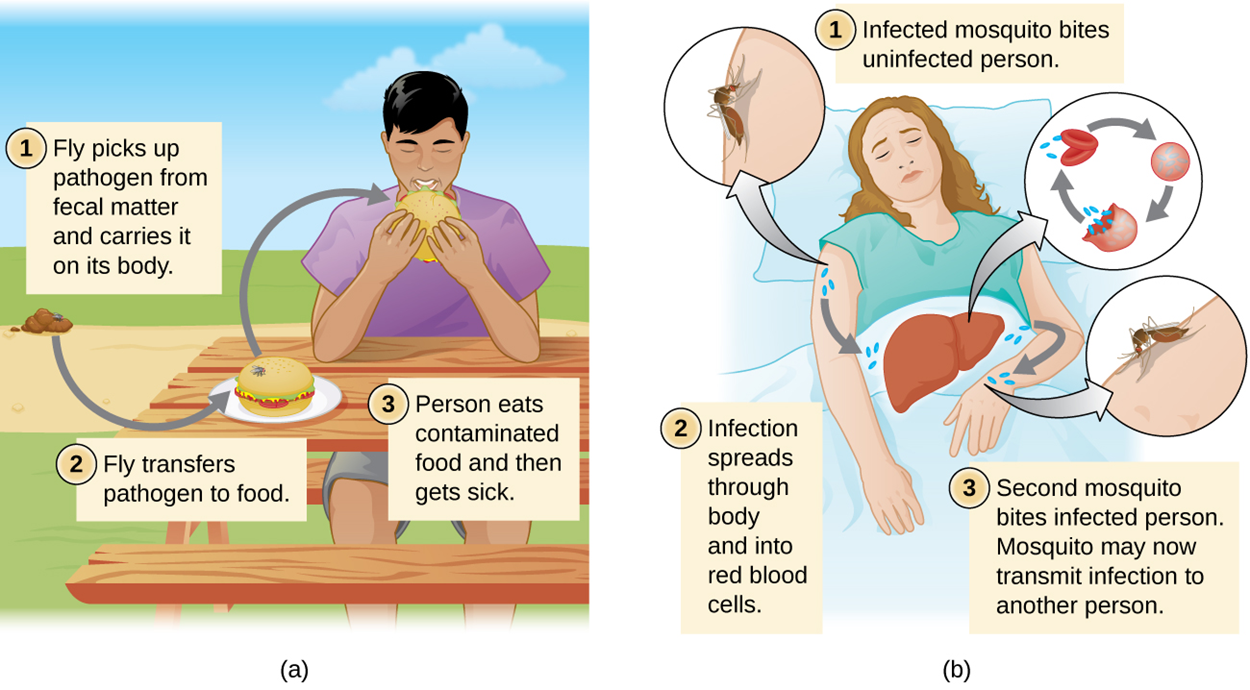
Arthropods (insects) commonly act as biological vectors. When they bite the skin, they create an entry point for a pathogen. The table below provides numerous examples of arthropod vectors and the diseases that they cause.
| Common Arthropod Vectors and Select Pathogens | |||
|---|---|---|---|
| Vector | Species | Pathogen | Disease |
Black fly
|
Simulium spp. | Onchocerca volvulus | Onchocerciasis (river blindness) |
Flea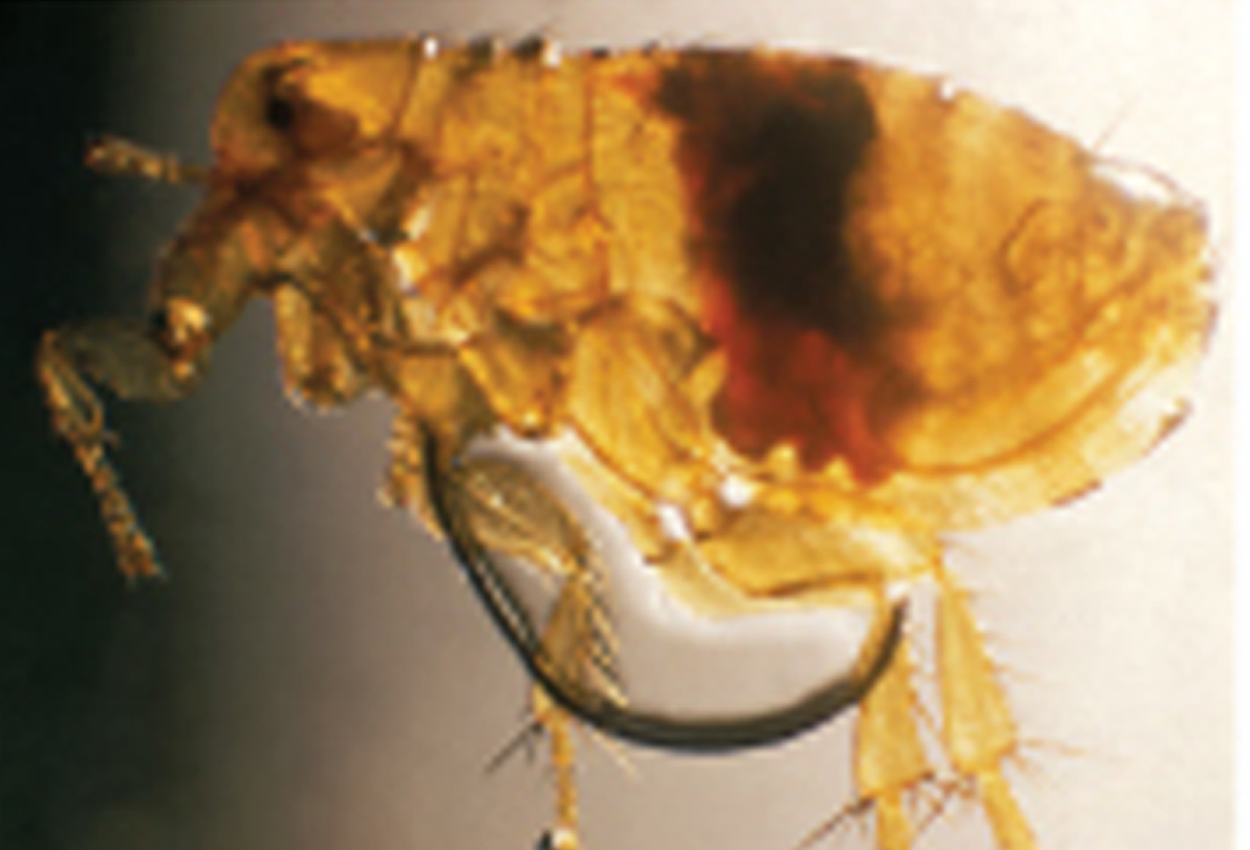
|
Xenopsylla cheopis | Rickettsia typhi | Murine typhus |
| Yersinia pestis | Plague | ||
Kissing bug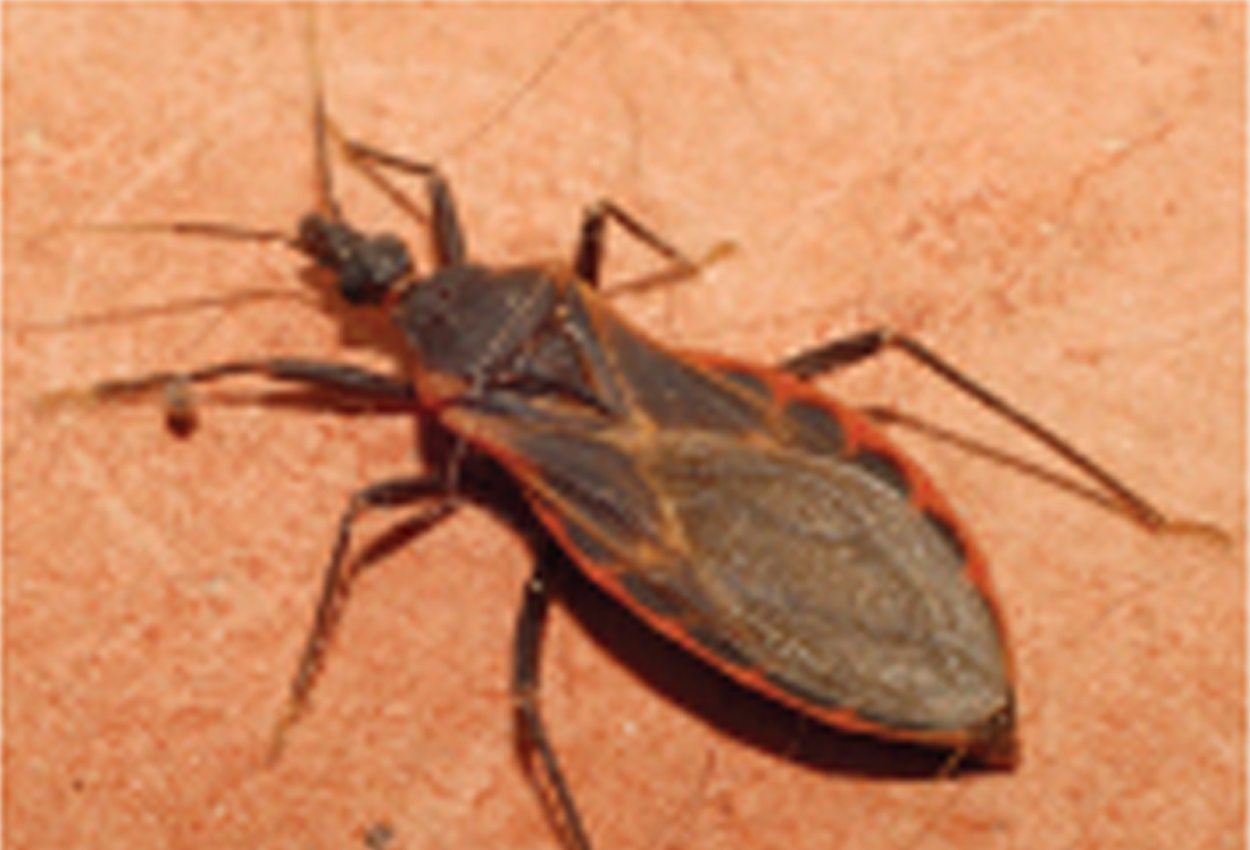
|
Triatoma spp. | Trypanosoma cruzi | Chagas disease |
Louse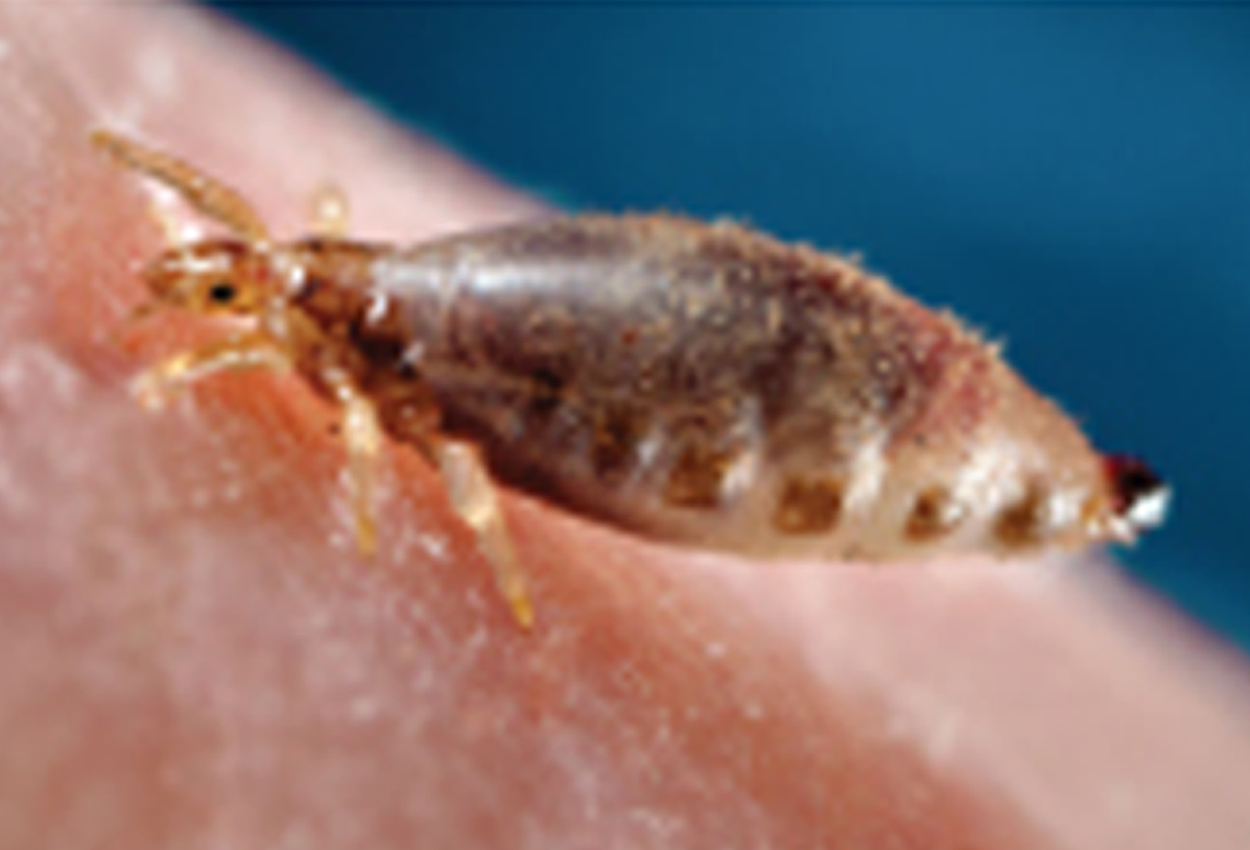
|
Pediculus humanus humanus | Bartonella quintana | Trench fever |
| Borrelia recurrentis | Relapsing fever | ||
| Rickettsia prowazekii | Typhus | ||
Mite (chigger)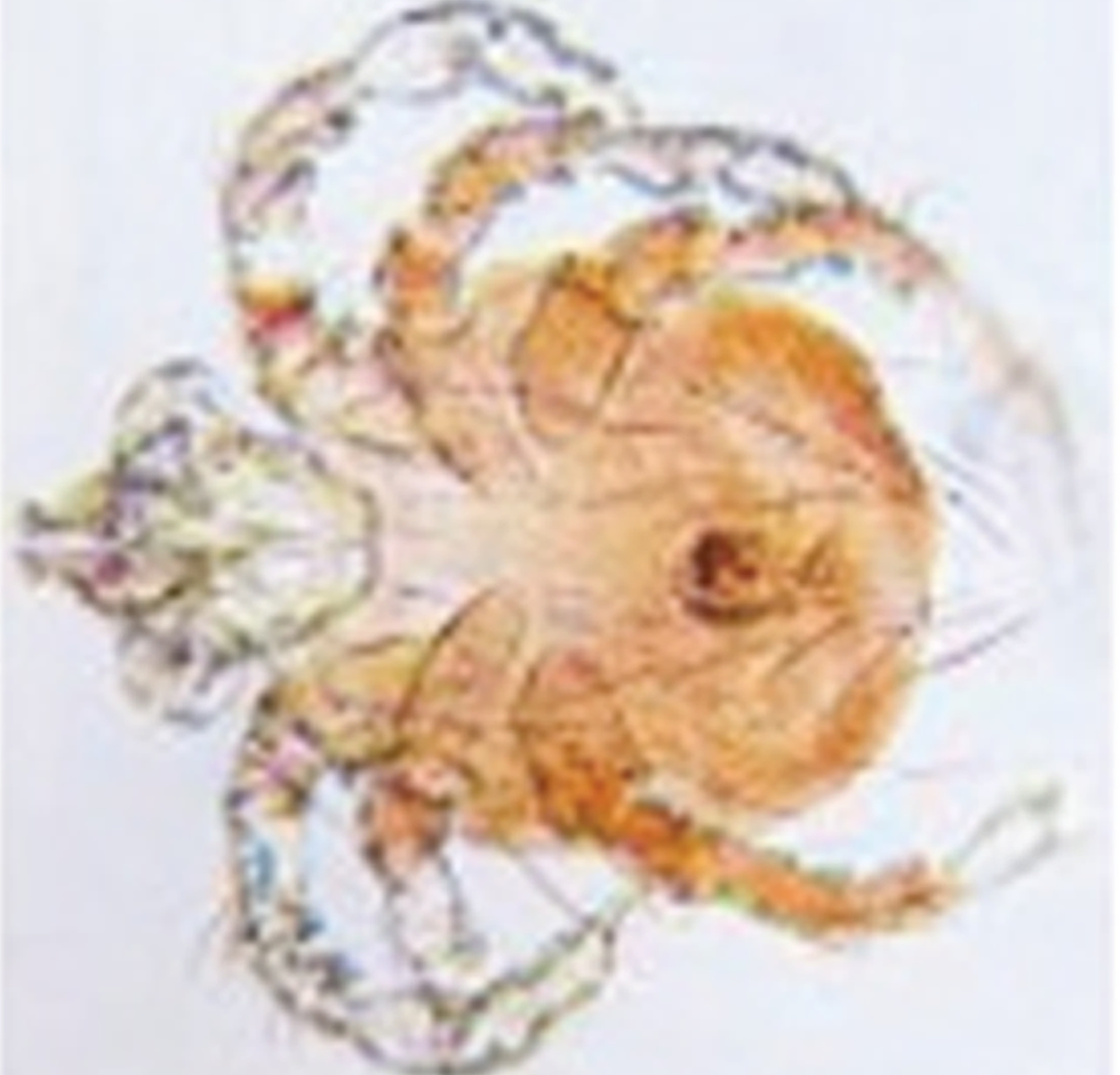
|
Leptotrombidium spp. | Orientia tsutsugamushi | Scrub typhus |
| Liponyssoides sanguineus | Rickettsia akari | Rickettsialpox | |
Mosquito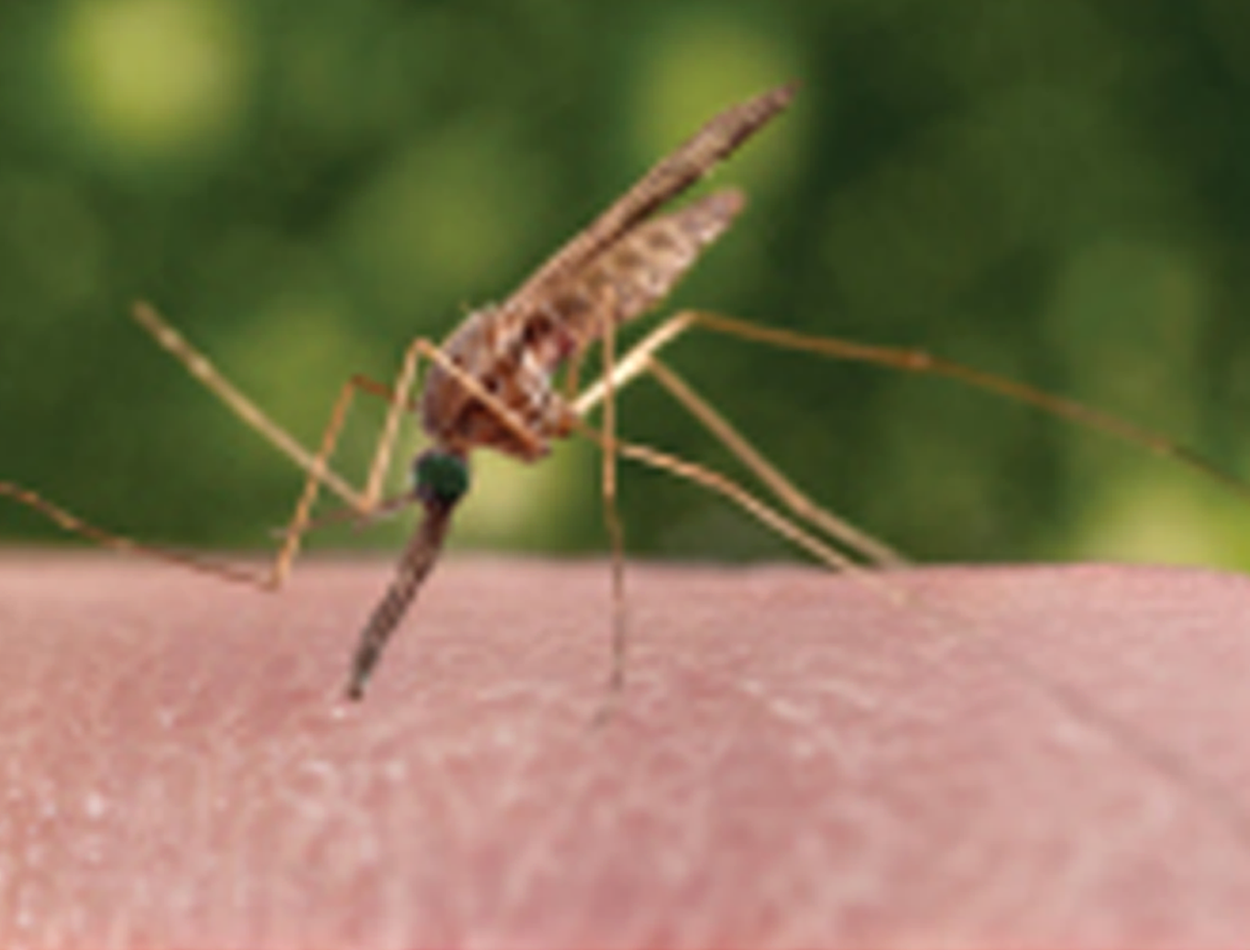
|
Aedes spp. Haemagogus spp. |
Yellow fever virus | Yellow fever |
| Anopheles spp. | Plasmodium falciparum | Malaria | |
| Culex pipiens | West Nile virus | West Nile disease | |
Sand fly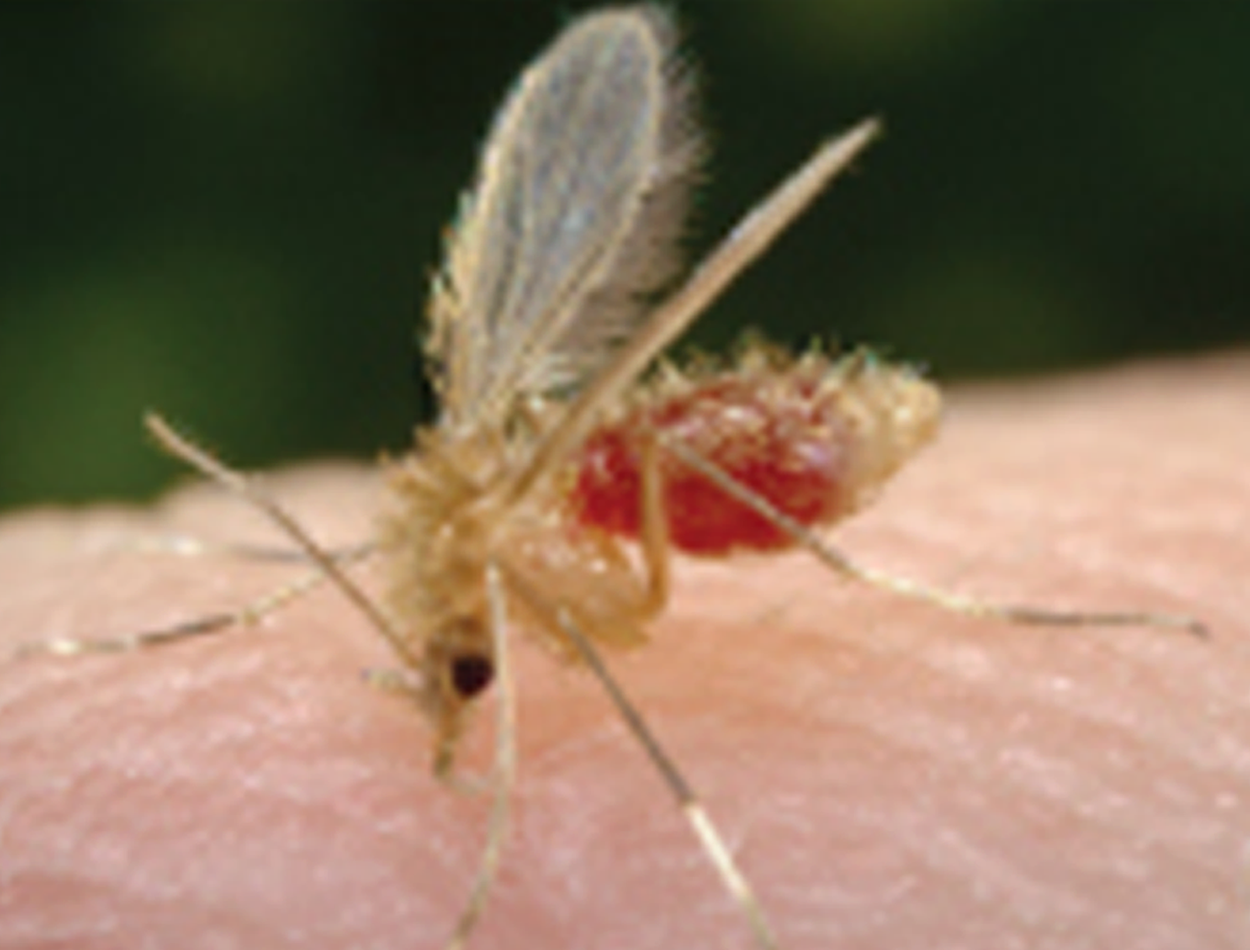
|
Phlebotomus spp. | Leishmania spp. | Leishmaniasis |
Tick
|
Ixodes spp. | Borrelia spp. | Lyme disease |
| Dermacentor spp. and others | Rickettsia rickettsii | Rocky Mountain spotted fever | |
Tsetse fly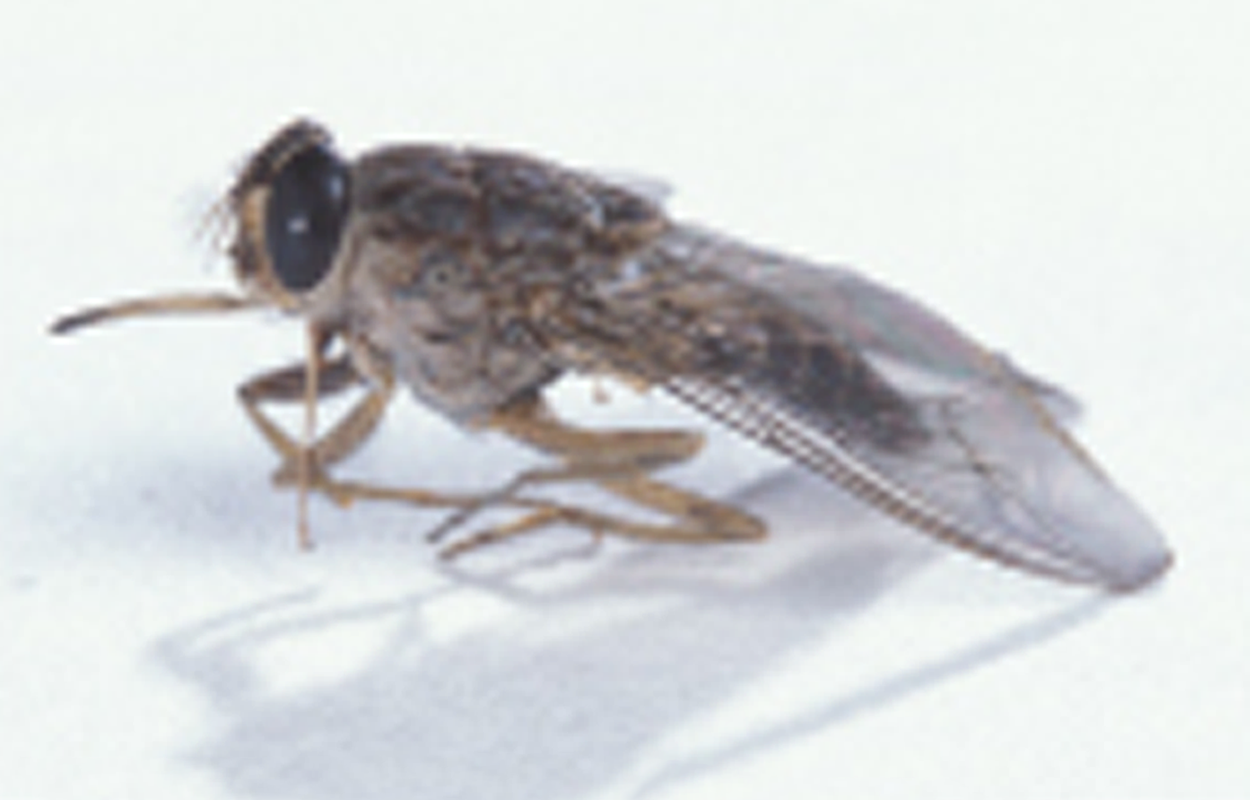
|
Glossina spp. | Trypanosoma brucei | African trypanosomiasis (sleeping sickness) |
Source: THIS TUTORIAL HAS BEEN ADAPTED FROM OPENSTAX “MICROBIOLOGY.” ACCESS FOR FREE AT openstax.org/details/books/microbiology. LICENSE: CC ATTRIBUTION 4.0 INTERNATIONAL.
REFERENCES
Centers for Disease Control (CDC). Isolation and precautions for people with COVID-19. Retrieved December 7, 2022, from www.cdc.gov/coronavirus/2019-ncov/your-health/isolation.html